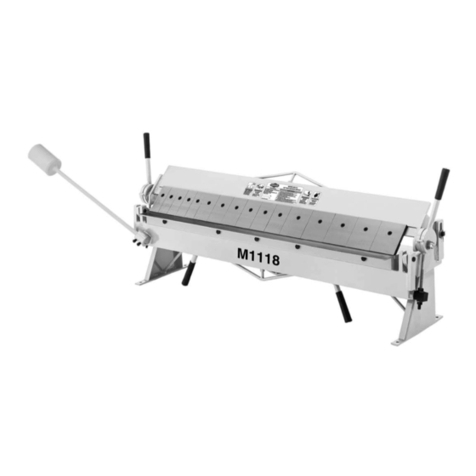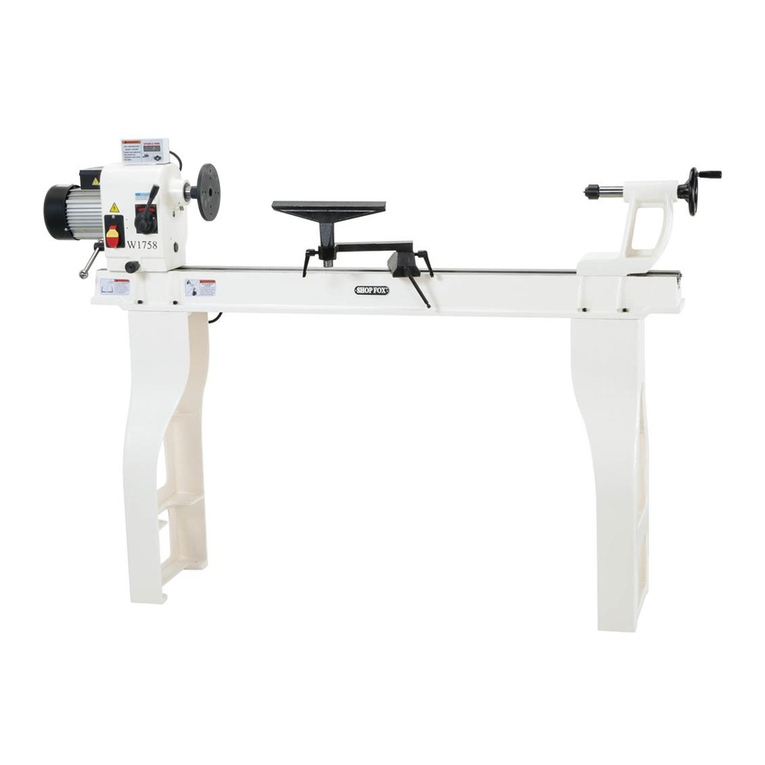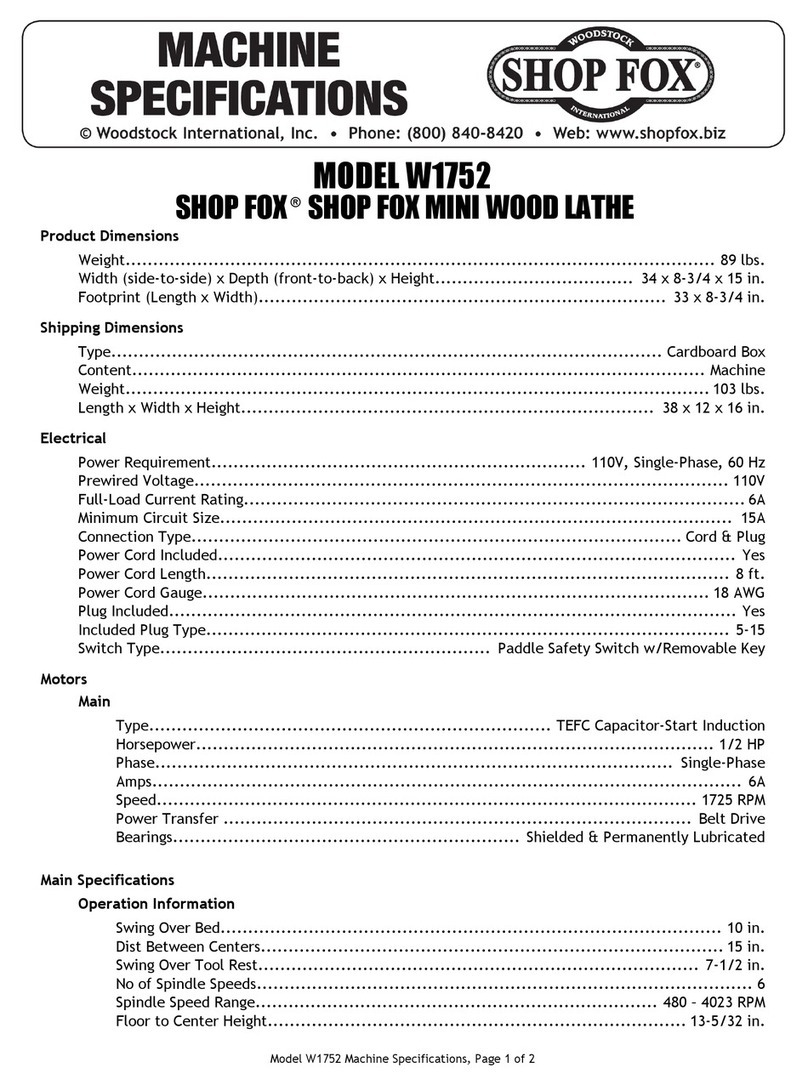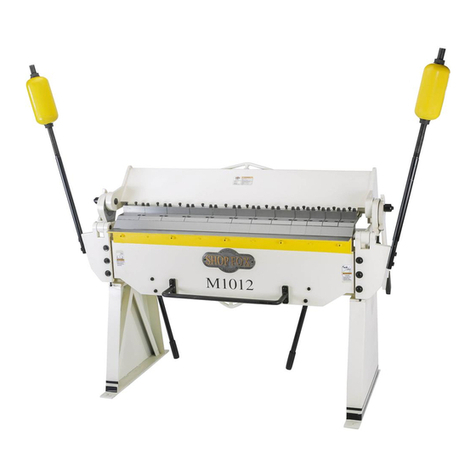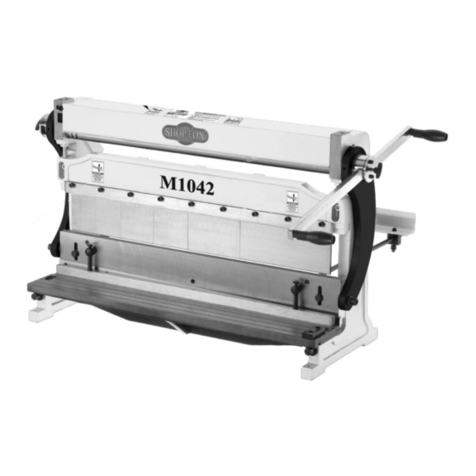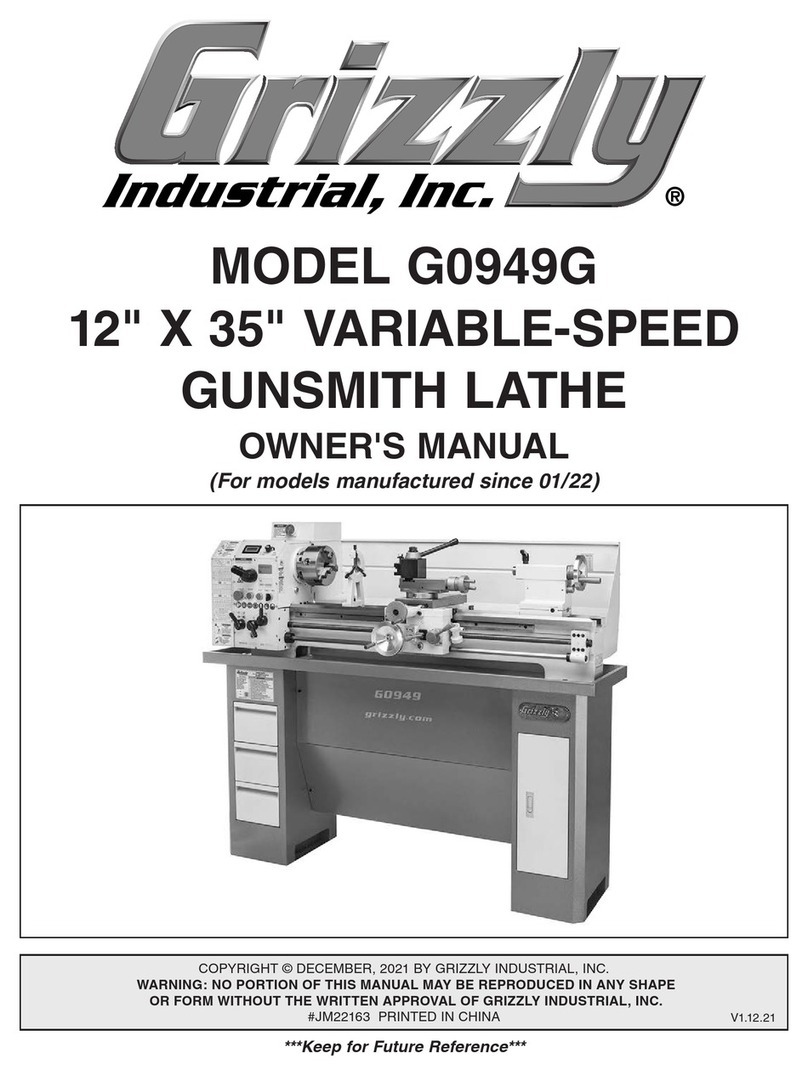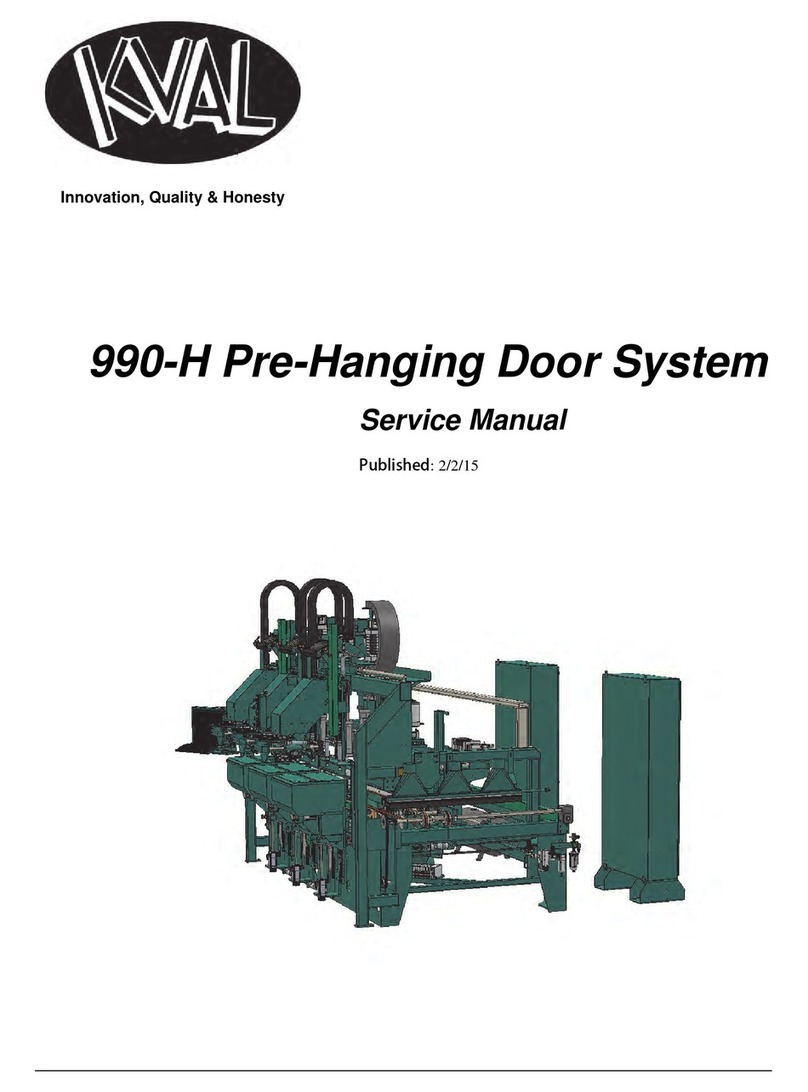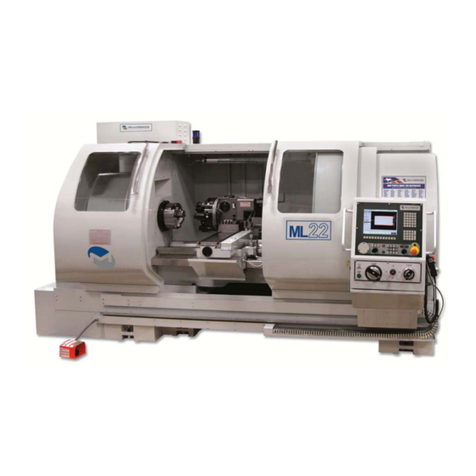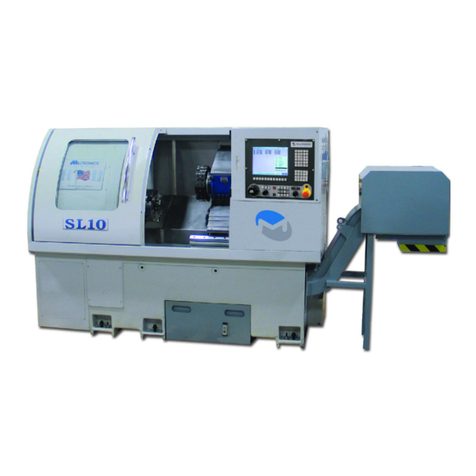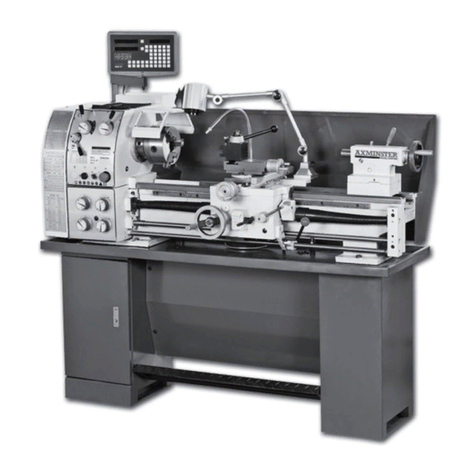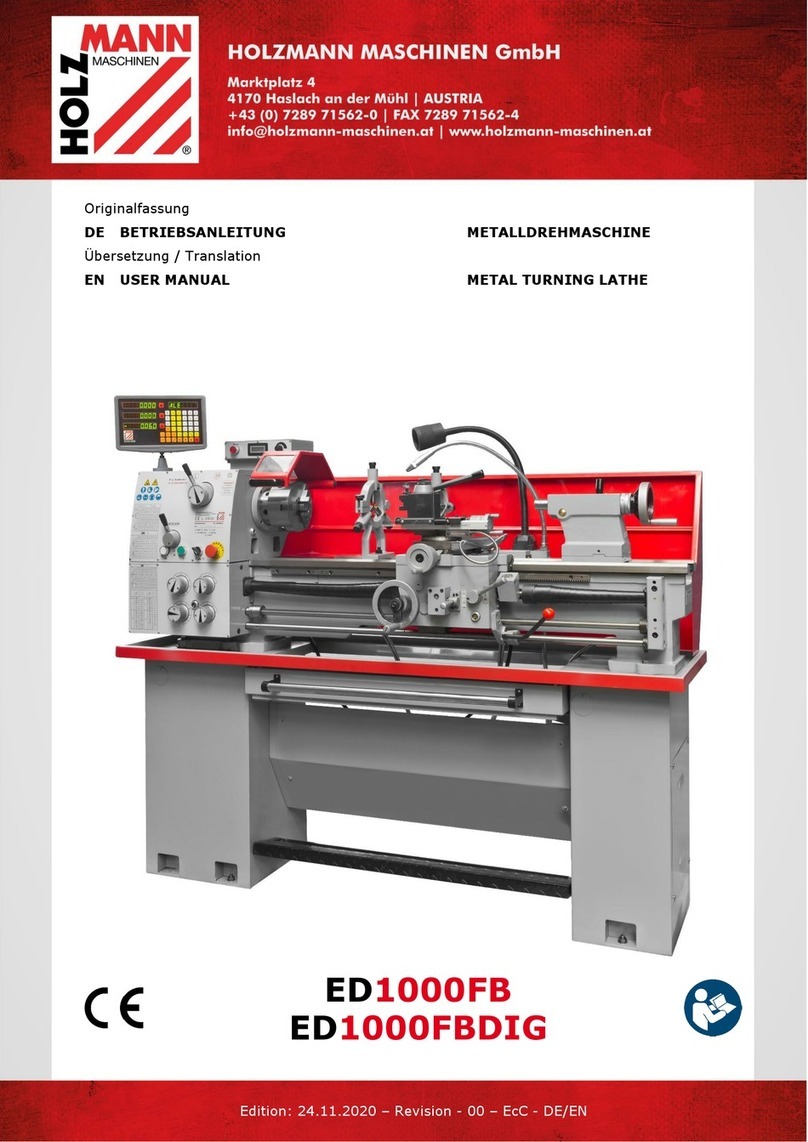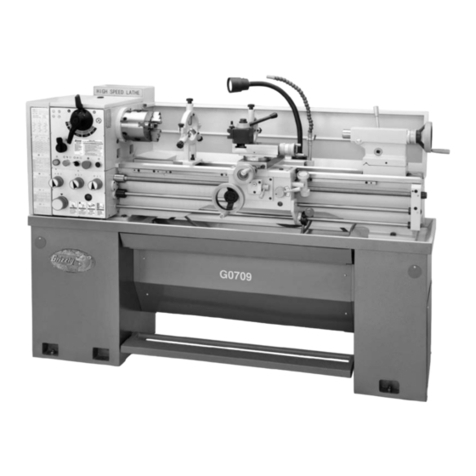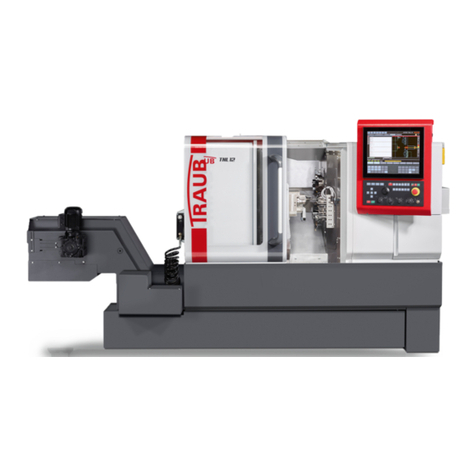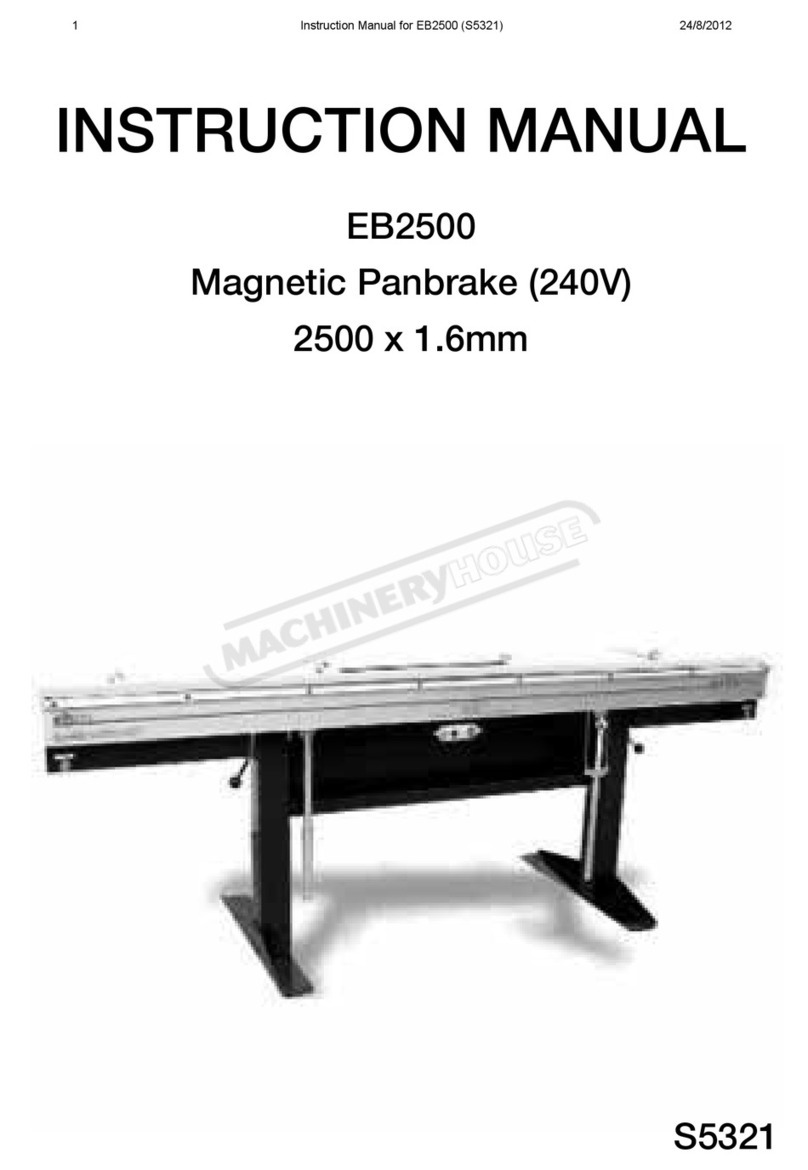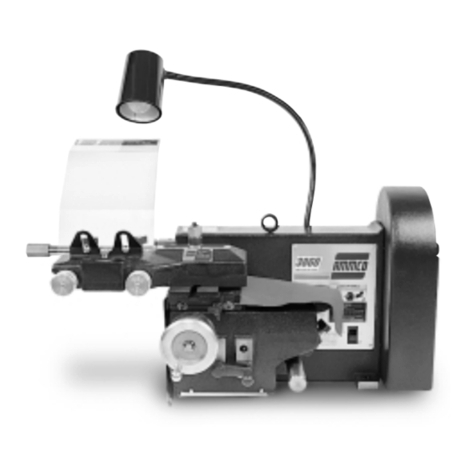
SETUPELECTRICAL MAINTENANCE SERVICE PARTS
OPERATIONS
SAFETYINTRODUCTION
USE THE QUICK GUIDE PAGE LABELS TO SEARCH OUT INFORMATION FAST!
Table of Contents
INTRODUCTION .....................................2
Woodstock Technical Support .................. 2
Controls and Features ........................... 6
SAFETY ...............................................7
Standard Machinery Safety Instructions ...... 7
Additional Safety for Metal Lathes ............ 9
Avoiding Potential Injuries.................... 10
ELECTRICAL ....................................... 11
Circuit Requirements .......................... 11
Grounding Requirements...................... 12
Extension Cords ................................ 12
SET UP .............................................. 13
Inventory ........................................ 13
Uncrating and Lifting .......................... 14
Cleaning Machine............................... 15
Machine Placement ............................ 15
Mounting to Shop Floor........................ 16
Power Connection.............................. 16
Lubricating Lathe .............................. 17
Test Run & Break-In............................ 17
Tailstock ......................................... 19
OPERATIONS....................................... 21
General .......................................... 21
Spindle Speeds.................................. 21
Mounting Chuck or Faceplate ................ 22
Swapping Jaws.................................. 25
Four-Jaw Chuck ................................ 26
Faceplate........................................ 27
Centers........................................... 28
Spindle Spider .................................. 28
Steady Rest...................................... 29
Follow Rest...................................... 29
Feed Direction Lever .......................... 30
Feed Rod Lever ................................. 30
Gearbox Levers ................................. 31
Feed Rate Chart ................................ 31
Carriage/Cross Feed Lever ................... 32
Half-Nut Lever and Inch Threading.......... 32
Change Gears & Metric Threading........... 33
Carriage Handwheels .......................... 35
Tool Post & Holder ............................. 35
Tailstock ......................................... 36
Cutting Shallow Tapers with Tailstock ...... 37
Drilling with Tailstock ......................... 37
Model M1112 Lathe Accessories.............. 38
MAINTENANCE .................................... 39
General Maintenance .......................... 39
General Cleaning ............................... 39
General Lubrication............................ 39
Coolant System ................................. 41
SERVICE ............................................ 42
Troubleshooting................................. 42
Gibs............................................... 44
Half-Nut Adjustment........................... 45
Adjusting/Replacing V-Belts .................. 46
Spindle Bearing Preload ....................... 47
Electrical Safety Instructions................. 50
M1112 Main Electrical Box Wiring Diagram 51
Headstock Shifters & Change Gears......... 58
PARTS .............................................. 58
Headstock Gearing & Control Panel ........ 60
Quick Change Gearbox ........................ 62
Apron Assembly................................. 64
Saddle & Cross Feed ........................... 66
Compound Rest ................................. 68
Tailstock Assembly ............................. 69
Bed and Motor Parts ........................... 70
Cabinet Parts ................................... 71
Spindle Switch Control Rod Assembly....... 73
Coolant System & Lamp....................... 74
Lathe Accessories .............................. 75
Main Electrical Box ............................ 76
Follow Rest & Steady Rest .................... 77
Label Placement ............................... 78
WARRANTY ........................................ 81

